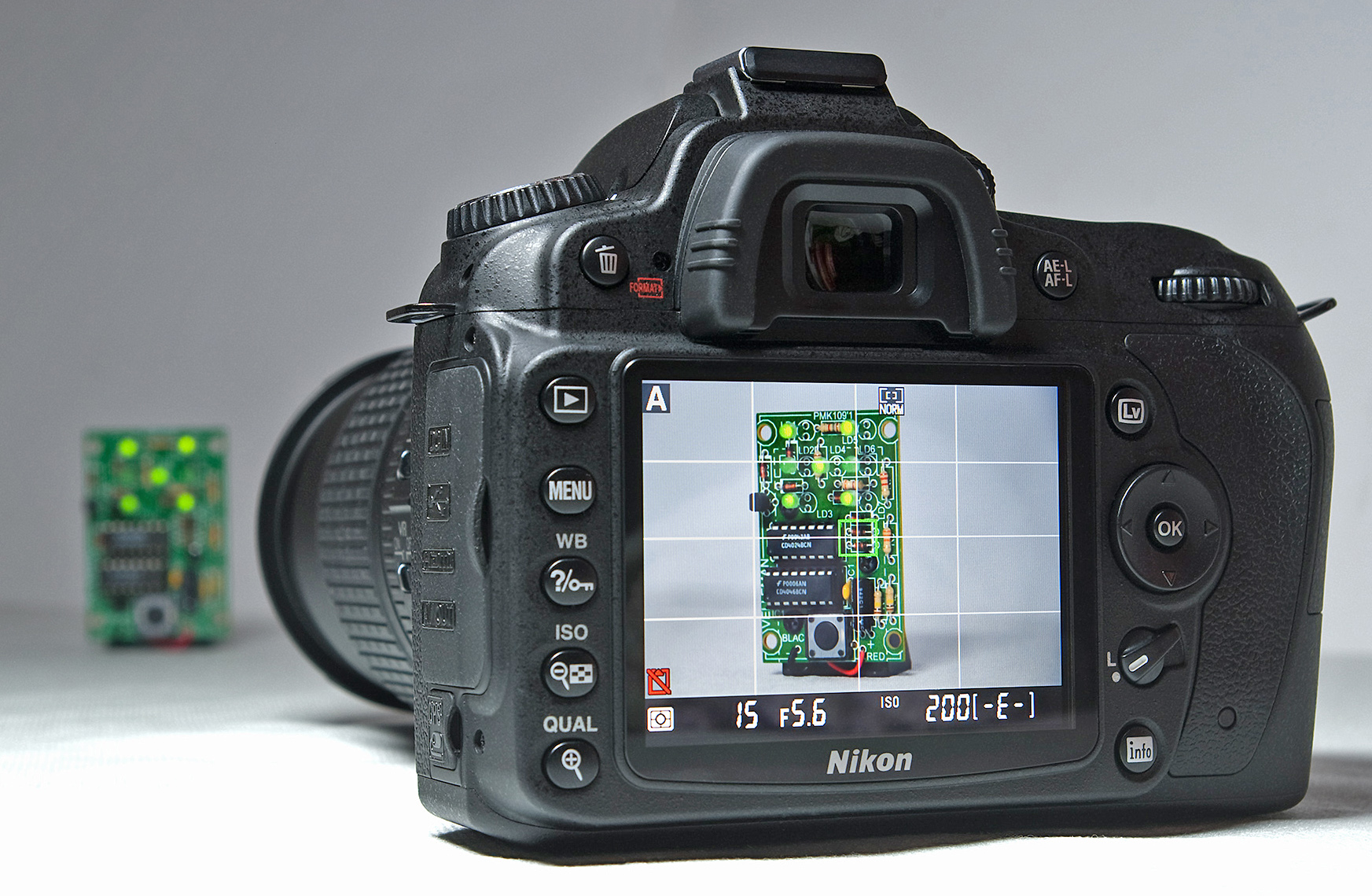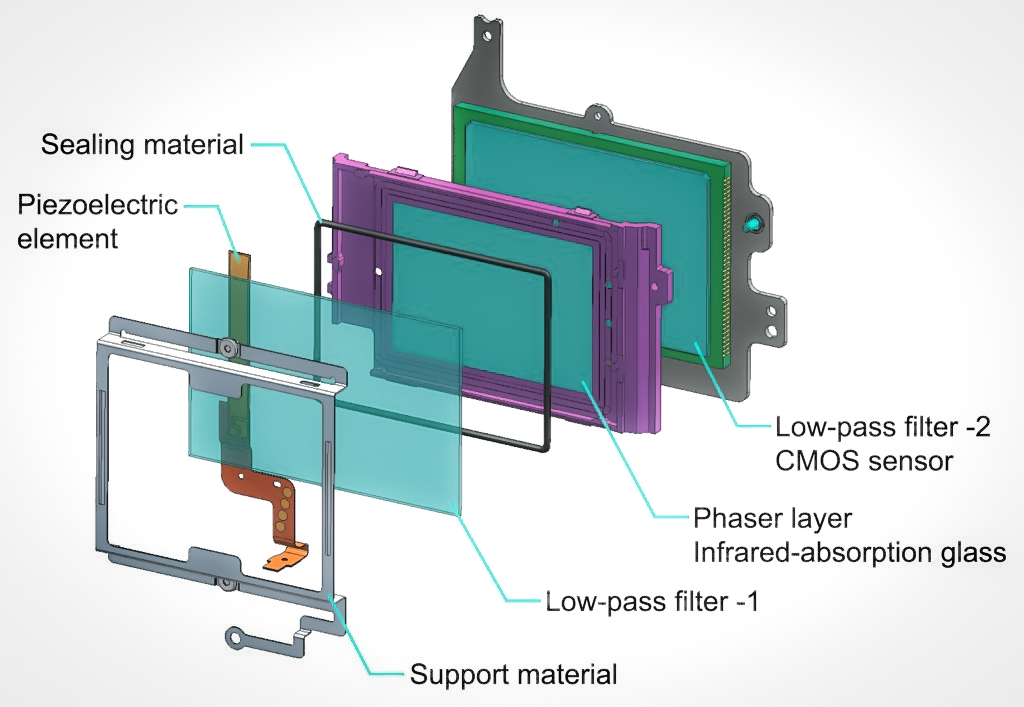|
Pentax K-5 IIs
The Pentax K-5 II is a 16.3-megapixel digital single-lens reflex camera, successor to the Pentax K-5, sharing its body shape with its two predecessors including the Pentax K-7, and making incremental improvements on the K-5. Both models have improved autofocus ability, particularly in low and tungsten light, down to −3EV, which at the time of release makes it the best low-light autofocus camera. Also improved is the sensitivity of the central AF area which now has an AF base of f/2.8 instead of the common f/5.6. This increased AF base length helps to improve focus accuracy, in particular with fast (wide aperture) lenses and in low light. The Pentax K-5 II/IIs each have HD video capabilities, with resolutions of 1920×1080 (at 25 fps), 1280×720 (at 25 & 30 fps), 640×480 (at 25 & 30 fps). Externally, the cameras are distinguished by a recessed screen, where the K-5 had a flush-mounted one. The K-5II/IIs has a gapless design—the typical air gap is avoided by th ... [...More Info...] [...Related Items...] OR: [Wikipedia] [Google] [Baidu] |
Digital Single-lens Reflex Camera
A digital single-lens reflex camera (digital SLR or DSLR) is a digital camera that combines the optics and the mechanisms of a single-lens reflex camera with a digital imaging sensor. The reflex design scheme is the primary difference between a DSLR and other digital cameras. In the reflex design, light travels through the lens and then to a mirror that alternates to send the image to either a prism, which shows the image in the viewfinder, or the image sensor when the shutter release button is pressed. The viewfinder of a DSLR presents an image that will not differ substantially from what is captured by the camera's sensor as it presents it as a direct optical view through the main camera lens, rather than showing an image through a separate secondary lens. DSLRs largely replaced film-based SLRs during the 2000s. Major camera manufacturers began to transition their product lines away from DSLR cameras to mirrorless interchangeable-lens cameras (MILC) beginning in the 2010 ... [...More Info...] [...Related Items...] OR: [Wikipedia] [Google] [Baidu] |
Pentax K-5
The Pentax K-5 is a 16.3-megapixel digital single-lens reflex camera, announced on September 20, 2010. It began shipping in mid-October 2010 and it was replaced by the Pentax K-5 II in the third quarter of 2012. Externally, the camera body is almost unchanged from the Pentax K-7 (the mode dial on the left side is slightly higher). The main improvements compared to the previous model are higher light sensitivity (ISO range between 80 and 51,200, high ISO performance with improved noise control); an increase in sensor resolution by nearly two megapixels; and an all-new autofocus subsystem, SAFOX IX+. The use of a Sony sensor in the K-5 signalled a major departure from the Samsung sensor partnership. The latest firmware release is 1.16. Feature improvements Consistent with previous Pentax models, there are many small improvements as well: * Multiple customizable "USER" modes * Customizable raw/Fx button replaces previous single-purpose raw button * Selectable noise reduction ... [...More Info...] [...Related Items...] OR: [Wikipedia] [Google] [Baidu] |
Live-preview Digital Cameras
Live preview is a feature that allows a digital camera's display screen to be used as a viewfinder. This provides a means of previewing framing and other exposure before taking the photograph. In most such cameras, the preview is generated by means of continuously and directly projecting the image formed by the lens onto the main image sensor. This in turn feeds the electronic screen with the live preview image. The electronic screen can be either a liquid crystal display (LCD) or an electronic viewfinder (EVF). Background The concept for cameras with live preview largely derives from electronic (video) TV cameras. Until 1995 most digital cameras did not have live preview, and it was more than ten years after this that the higher end digital single-lens reflex cameras (DSLR) adopted this feature, as it is fundamentally incompatible with the swinging-mirror single-lens reflex mechanism. The first digital still camera with an LCD for autogain framing live preview was the C ... [...More Info...] [...Related Items...] OR: [Wikipedia] [Google] [Baidu] |
Cameras Introduced In 2012
A camera is an Optics, optical instrument that can capture an image. Most cameras can capture 2D images, with some more advanced models being able to capture 3D images. At a basic level, most cameras consist of sealed boxes (the camera body), with a small hole (the aperture) that allows light to pass through in order to capture an image on a light-sensitive surface (usually a Image sensor, digital sensor or photographic film). Cameras have various mechanisms to control how the light falls onto the light-sensitive surface. Lenses focus the light entering the camera, and the aperture can be narrowed or widened. A Shutter (photography), shutter mechanism determines the amount of time the photosensitive surface is exposed to the light. The still image camera is the main instrument in the art of photography. Captured images may be reproduced later as part of the process of photography, digital imaging, or photographic printing. Similar artistic fields in the moving-image camera dom ... [...More Info...] [...Related Items...] OR: [Wikipedia] [Google] [Baidu] |
Pentax DA 18-135mm Lens
The smc Pentax-DA 18-135mm f/3.5-5.6 ED AL [IF] DC WR is an APS-C standard zoom and high-end kit lens for Pentax DSLRs, introduced in September 2010. As a kit lens, it was the higher-end option for the Pentax K-5, as an alternative to the lower priced Pentax DA 18-55mm lens, SMC Pentax-DA 18-55mm f/3.5-5.6 AL WR, and has continued in that role with subsequent Pentax DSLR models. It is also compatible with the Pentax K-01, K-01 mirrorless camera. ReferencesOfficial specifications External links * {{Pentax K-mount lenses Pentax K-mount lenses, 18-135 Camera lenses introduced in 2010 ... [...More Info...] [...Related Items...] OR: [Wikipedia] [Google] [Baidu] |
Pentax DA 18-55mm Lens
The SMC Pentax-DA 18-55mm f/3.5-5.6 AL lens is a standard zoom lens for the Pentax K-mount. It is often sold as a kit lens with Pentax digital SLR cameras and has a 35mm equivalent focal length of 27–82.5mm. Its optical formula is made of 12 elements in 9 groups. There are two variants of this lens: *SMC Pentax-DA 18-55mm 1:3.5-5.6 AL (first version of 18–55; LensType=252) *Samsung D-XENON 18-55mm 1:3.5-5.6 AL (Schneider Kreuznach branded variant; supplied with Samsung GX-series DSLRs; LensType=246) A new optical formula (11 elements in 8 groups) was introduced in 2008 and exists in five variants: *SMC Pentax-DA 18-55mm 1:3.5-5.6 AL II (revised version with greater sharpness; LensType=229) *Samsung D-XENON 18-55mm 1:3.5-5.6 AL II (Schneider Kreuznach Schneider Kreuznach () is the abbreviated name of the company Jos. Schneider Optische Werke GmbH, which is sometimes also simply referred to as Schneider. They are a manufacturer of industrial and photographic optics. The com ... [...More Info...] [...Related Items...] OR: [Wikipedia] [Google] [Baidu] |
Anti-aliasing Filter
An anti-aliasing filter (AAF) is a filter used before a signal sampler to restrict the bandwidth of a signal to satisfy the Nyquist–Shannon sampling theorem over the band of interest. Since the theorem states that unambiguous reconstruction of the signal from its samples is possible when the power of frequencies above the Nyquist frequency is zero, a brick wall filter is an idealized but impractical AAF. A practical AAF makes a trade off between reduced bandwidth and increased aliasing. A practical anti-aliasing filter will typically permit some aliasing to occur or attenuate or otherwise distort some in-band frequencies close to the Nyquist limit. For this reason, many practical systems sample higher than would be theoretically required by a perfect AAF in order to ensure that all frequencies of interest can be reconstructed, a practice called oversampling. Optical applications The Pentax K-3 from Ricoh introduced a unique sensor-based anti-aliasing filter. The fil ... [...More Info...] [...Related Items...] OR: [Wikipedia] [Google] [Baidu] |
DxO Labs
DxO is a French company dedicated to photography. Founded in 2006, it is located in Boulogne-Billancourt. It markets DxO PhotoLab, ViewPoint, and FilmPack image processing software and a connected camera, the DxO ONE. History DxO created DxOMark.com, which provides image quality ratings for standalone cameras, lenses, and mobile devices that include cameras. However it has spun off from them, DxOMark Image Labs. On October 25, 2017, DxO announced the acquisition of the Nik Collection assets from Google. Products DxO PhotoLab DxO PhotoLab is software which corrects various optical aberrations, notably image distortion, with corrections tuned to particular lenses and cameras. It also adjusts lighting and color rendering. The software reads the Exif file to gather information about the camera, the lens and the settings that were used. Its automatic optical adjustment can fix: * Distortion of curved line (should be straight) * Color fringes * Light fall off of vignetting * Make s ... [...More Info...] [...Related Items...] OR: [Wikipedia] [Google] [Baidu] |
Pentax K-7
The Pentax K-7 is a 14.6-megapixel digital single-lens reflex camera, announced on 20 May 2009. This is the first new flagship model released by Pentax since its merger with Hoya Corporation on 31 March 2008. It was discontinued late in 2010 in favour of the K-5. Features The Pentax K-7 was announced on 20 May 2009 and shipping began as of the first week of July 2009. The K-7 has the same pixel count as its predecessor, the K20D, but offers a significantly expanded feature set in a smaller body. New features include: * body is still weather resistant like the K20D; however, it is now made of magnesium alloy, and it is now also low temperature resistant * a high-definition video recording function (30 frames per second at 1536×1024 resolution or HDTV (cropped)) * TAv exposure mode: Time/Aperture Value: photographer sets his own desired shutter speed/aperture, while the camera adjusts the ISO accordingly to compensate exposure * in-camera high dynamic range imaging function ... [...More Info...] [...Related Items...] OR: [Wikipedia] [Google] [Baidu] |
Digital Single-lens Reflex Camera
A digital single-lens reflex camera (digital SLR or DSLR) is a digital camera that combines the optics and the mechanisms of a single-lens reflex camera with a digital imaging sensor. The reflex design scheme is the primary difference between a DSLR and other digital cameras. In the reflex design, light travels through the lens and then to a mirror that alternates to send the image to either a prism, which shows the image in the viewfinder, or the image sensor when the shutter release button is pressed. The viewfinder of a DSLR presents an image that will not differ substantially from what is captured by the camera's sensor as it presents it as a direct optical view through the main camera lens, rather than showing an image through a separate secondary lens. DSLRs largely replaced film-based SLRs during the 2000s. Major camera manufacturers began to transition their product lines away from DSLR cameras to mirrorless interchangeable-lens cameras (MILC) beginning in the 2010 ... [...More Info...] [...Related Items...] OR: [Wikipedia] [Google] [Baidu] |
APS-C
Advanced Photo System type-C (APS-C) is an image sensor format approximately equivalent in size to the Advanced Photo System film negative in its C ("Classic") format, of 25.1×16.7 mm, an aspect ratio of 3:2 and Ø 31.15 mm field diameter. It is therefore also equivalent in size to the Super 35 motion picture film format, which has the dimensions of 24.89 mm × 18.66 mm (0.980 in × 0.735 in) and Ø 31.11 mm field diameter. Sensors approximating these dimensions are used in many digital single-lens reflex cameras (DSLRs), mirrorless interchangeable-lens cameras (MILCs), and a few large-sensor live-preview digital cameras. APS-C size sensors are also used in a few digital rangefinders. Such sensors exist in many different variants depending on the manufacturer and camera model. All APS-C variants are considerably smaller than 35 mm standard film which measures 36×24 mm. Because of this, devices with APS-C sensors are known as "cro ... [...More Info...] [...Related Items...] OR: [Wikipedia] [Google] [Baidu] |



